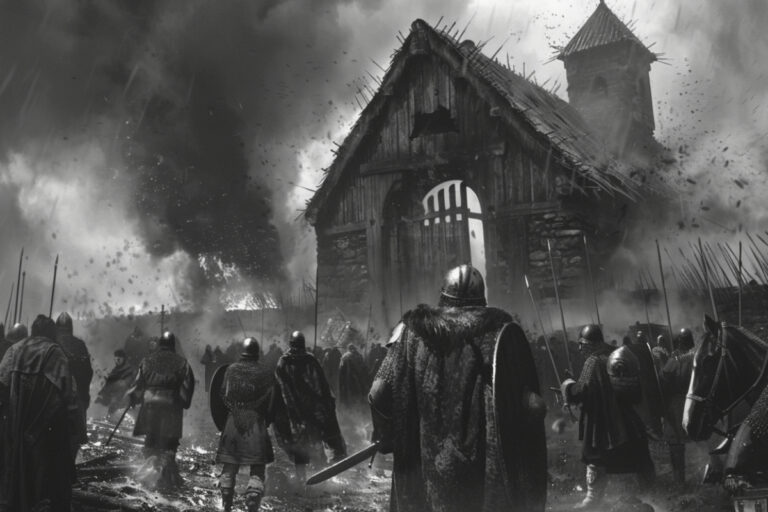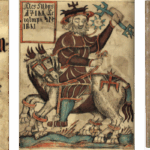We usually think of the Vikings as sailing out of the Scandinavian homes to Britain where they pillaged, stole, and massacred many of the local inhabitants.
But in a historic massacre that took place on St Brice’s day in 1002 CE, the Anglo-Saxons turned the tables on the Vikings, massacring many of the Vikings who had settled in England.
The Viking Invasion
It is generally accepted that the first major Viking raid in England happened at Lindisfarne in 789 CE.
This was followed by regular raids, but also waves of settlers looking for new homes.
The Vikings began to settle in the area around Dublin in 846, they established their kingdom at York in 866.
Twenty years later, in 886, King Alfred the Great of Wessex made a treaty with the Vikings, called Danes, giving them command over various English territories under the Danelaw pact.

Life in England was relatively peaceful for several generations.
While there were raids and skirmishes, it was nothing like what had happened in earlier years.
This changed in the 980s when raiding started to intensify again.
This culminated in the Battle of Maldon in 991.
This was a devastating loss for the Anglo-Saxons and the English king, Aethelred the Unready, was convinced to pay the Vikings off with Danegeld, of about 10,000 Roman pounds of silver, which was around 3,300 kilograms.
Despite the payment, raids continued for the next ten years, getting increasingly aggressive.
In 1001, they raided through southern England, burning villages indiscriminately as they went.
The final straw was when Aethelred was told that the Vikings had put a curse on the king and his council, saying that they would take their territory with ease.
In response to this, Aethelred reportedly ordered his army to slay all the Danes in England.
He ordered the massacre to take place on 13 November 1002, which was also St Brice’s day, which is why it is known as the St Brice’s Day Massacre.
All the Danes in England
Historians debate what was meant by “all the Danes in England.”
Some suggest that this called for the indiscriminate killings of all Anglo-Danes, including women and children.
Others suggest that they largely left long-term settlements alone and focused on the new raiders and warriors who had recently started to raid England again.
The archaeological evidence suggests that the massacre focused on the male Danish population, though they could have been a mix of established settlers and new invaders.
Oxford Victims
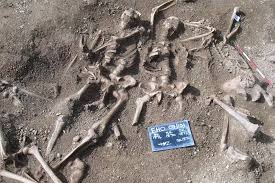
The most famous evidence for the massacre comes from Oxford.
A royal charter from 1004 CE remarks on the “most just extermination” of the Vikings in Oxford.
It also describes how those targeted tried to take shelter in the church.
When the Anglo-Saxons were unable to dislodge them, they burned the church, which King Aethelred was rebuilding.
In 2008, archaeological investigations at St John’s College discovered the bodies of 37 people who had been massacred.
It is now believed that these bodies belonged to the Vikings who hid in the church on St Brice’s day.
The bodies include 35 males between the ages of 16 and 25, and two children of unknown gender, supporting the idea that men were targeted as part of the massacre.
This might make sense since many settling Vikings married local Anglo-Saxon women.
The bodies show a mix of old scars, suggesting old injuries that have healed, which could be appropriate for both settlers and warriors.
Chemical analysis also suggests that the 37 bodies had Viking origins, and they are dated to between 960-1020 CE, making St Brice’s Day a strong possibility.
The bodies are unarmed and show no defensive wounds. Instead, wounds are focused on the back, suggesting that they were attacked while fleeing, either into the church or from the burning church.
Ridgeway Hill Victims

A group of 54 bodies that have been found at Ridgeway Hill probably also relate to the St Brice’s Day Massacre.
The mass grave contains 54 male bodies, which isotope analysis suggests belonged to Vikings, and date to 970-1030 CE.
All the bodies were beheaded, with the heads and bodies separated for burial.
Notably, three heads are missing, suggesting that they may have belonged to important Vikings and were kept as trophies or proof of death for the king.
Ridgeway Hill is located in the south of England in a territory heavily targeted by the Vikings in the 990s, which suggests that the Vikings there would have been targeted as part of the massacre.
The Revenge of Sweyn Forkbeard
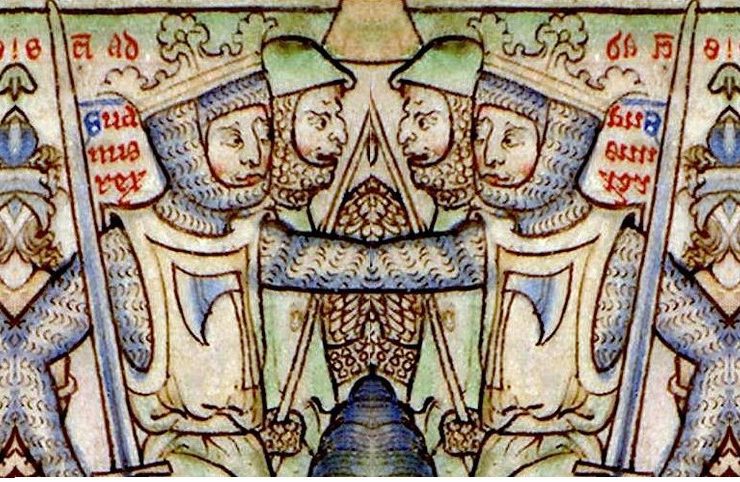
Many historians suggest that it was the massacre that encouraged the King of Denmark, Sweyn Forkbeard, to launch an invasion of England in the following year.
Reportedly, his sister Gunnhilde and her husband Pallig Tokesen were both killed in the massacre, which could have been a further motivating factor.
Others suggest that Sweyn was more motivated by money because he made an arrangement with Duke Richard II of Normandy to sell him the spoils of his planned raids.
Whatever his motivation, Sweyn Forkbeard led waves of invasions and pillaging England in 1102 to 1005, from 1006 to 1007, and from 1009 to 1012.
He extorted massive amounts of Danegeld from the locals in exchange for protection from their violence.
Sweyn also specifically went to Oxford, where he took hostage, which is appropriate if he was reaping vengeance for the massacre.
In 1013, Sweyn Forkbeard was dominant and forced King Aethelred and his two sons into exile.
He then set about organizing his new territory as the king of both Denmark and England.
However, he died on 3 February 1014, just five weeks after his success.
The sources are inconsistent on whether he was killed, died of natural causes, or died in an accident.
Creating the North Sea Empire
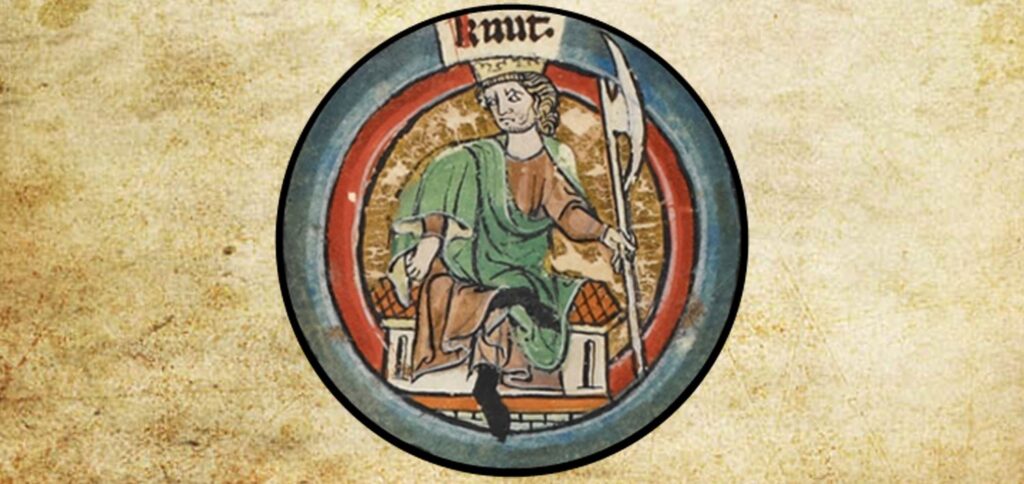
On his death, Sweyn’s new kingdom was split, with Denmark going to his son Harald II, and England to his son Cnut.
Nevertheless, this left a power vacuum in England, which enabled Aethelred to return in 1014.
This forced Cnut out temporarily, but Aethelred himself died in 1016, allowing Cnut to return with his forces and retake England.
In 1019, Harald II died, and Cnut became the king of Denmark as well.
Over time, he would also become king of Norway, parts of Sweden, Pomerania (now part of Poland), and Schleswig (now part of Germany).
This was called the North Sea Empire by historians.
The Vikings lost control of England in 1042, when Cnut’s son Harthacnut died.
Before he died, he invited his half-brother Edward the Confessor to take his place, who was, ironically, the son of Aethelred the Unready.
In 1002, Aethelred married Emma of Normandy, the sister of Duke Richard II of Normandy, who agreed to buy the spoils of Sweyn’s English raids at around the same time.
Edward was one of his sons, and he was king of England until the successful Norman invasion in 1066.
A Famous Massacre
The St Brice’s Massacre stands out in history as it is one of the few examples of the Vikings being on the receiving end of such violence, rather than delivering it.
Despite the high death toll, with hindsight, the massacre was seen as a political mistake.
In the end, not only did the Vikings invade and kill many more people, but the Anglo-Saxons also lost control of England for 40 years.
But at the time, Aethelred was desperate as he had no way to stop the Vikings from continually raiding his territory.
